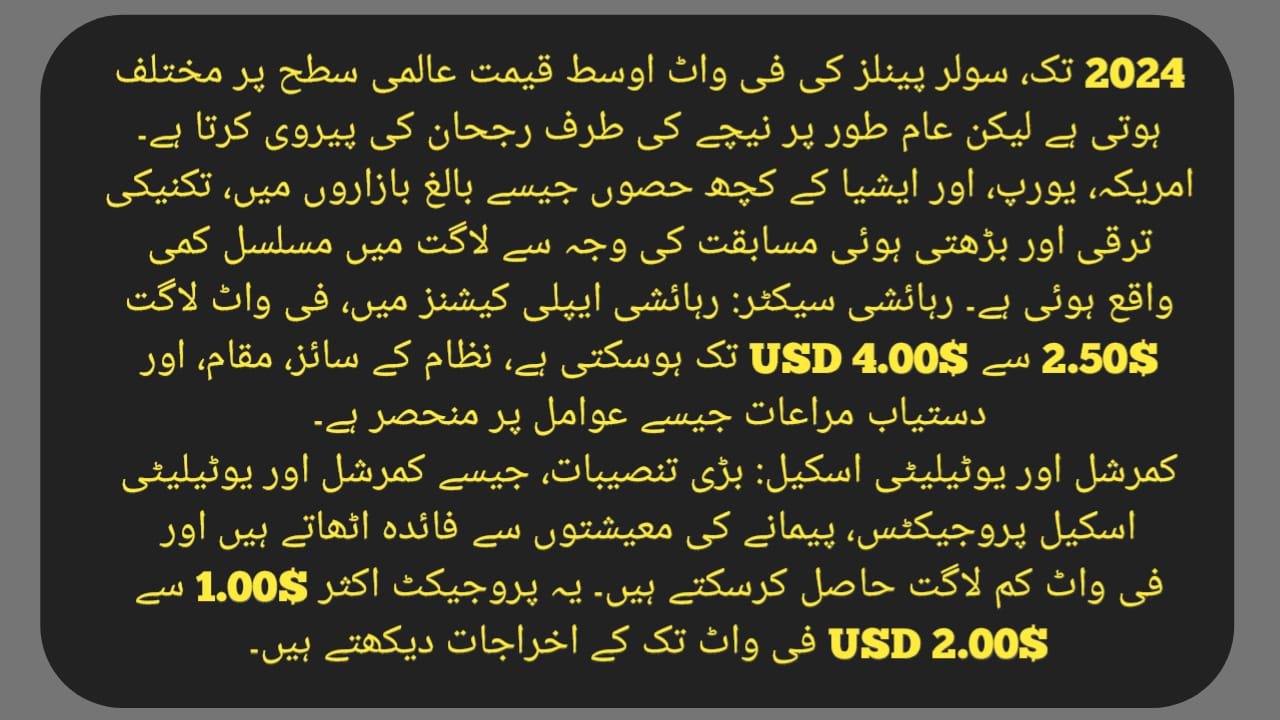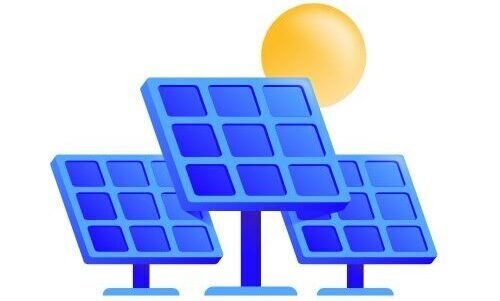The Cost of Solar Panels per Watt in 2024
In 2024, the cost of solar panels continues to evolve, driven by technological advancements, market dynamics, and policy changes. Understanding the cost per watt is crucial for evaluating the feasibility and economics of solar energy systems. Here’s an in-depth look at the factors influencing solar panel costs and what the landscape looks like in 2024.
Factors Influencing Solar Panel Costs
- Technological Advancements: The efficiency of solar panels has been steadily increasing, allowing more electricity to be generated per square meter of panel area. Higher efficiency typically leads to lower overall system costs by reducing the number of panels needed for a given amount of electricity.
- Manufacturing Scale and Competition: As the solar industry scales up production and competition intensifies among manufacturers, economies of scale come into play. This tends to drive down the cost of manufacturing solar panels, which translates to lower prices for consumers.
- Raw Material Costs: The prices of raw materials such as silicon, which is a key component in most solar panels, can fluctuate and impact overall panel costs. Supply chain disruptions or changes in global demand can influence these costs significantly.
- Government Policies and Incentives: Subsidies, tax credits, and other incentives provided by governments can substantially reduce the upfront cost of installing solar panels. These policies vary by region and can have a significant impact on the cost-effectiveness of solar energy systems.
- Installation Costs: Beyond the cost of the panels themselves, installation expenses include labor, mounting hardware, inverters, and other components necessary for a functional solar PV system. Installation efficiency and local labor rates can affect these costs.
Current Trends in Solar Panel Costs

As of 2024, the average cost of solar panels per watt varies globally but generally follows a downward trend. In mature markets like the United States, Europe, and parts of Asia, costs have continued to decline due to technological advancements and increased competition.
- Residential Sector: In residential applications, the cost per watt can range from $2.50 to $4.00 USD, depending on factors such as system size, location, and available incentives.
- Commercial and Utility-Scale: Larger installations, such as commercial and utility-scale projects, benefit from economies of scale and can achieve lower costs per watt. These projects often see costs ranging from $1.00 to $2.00 USD per watt.
Future Outlook
Looking ahead, experts anticipate further cost reductions driven by continued technological innovation, economies of scale, and supportive government policies. Improvements in energy storage technologies, such as batteries, are also expected to enhance the value and appeal of solar energy systems by enabling better integration with the electrical grid and improving energy reliability.
Conclusion
In conclusion, the cost of solar panels per watt in 2024 reflects a dynamic industry shaped by innovation, competition, and policy. While specific costs vary by region and application, the overall trend of decreasing costs makes solar energy an increasingly attractive option for residential, commercial, and utility-scale projects worldwide. Understanding these cost dynamics is crucial for stakeholders evaluating the economic viability and sustainability benefits of solar energy investments in the years to come.

